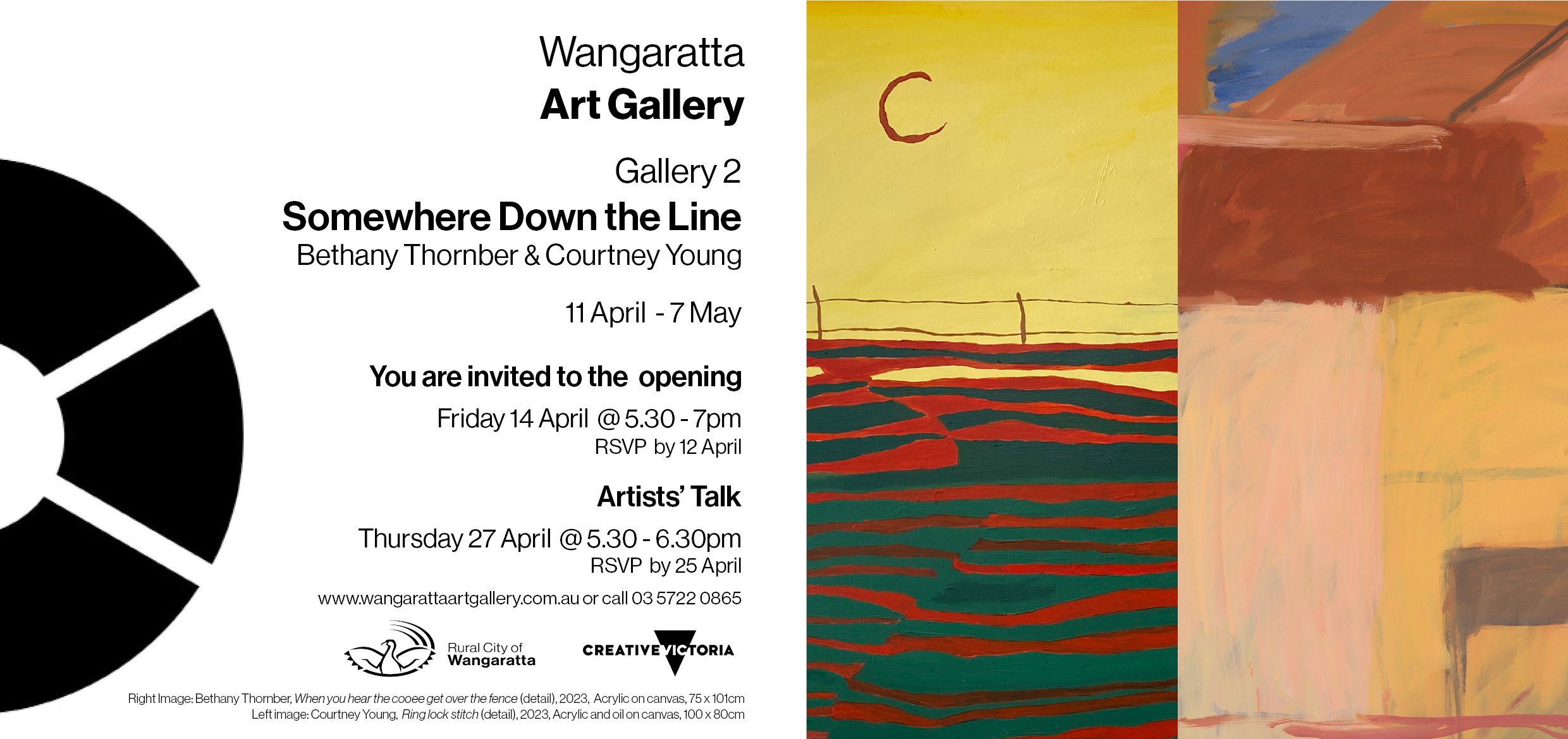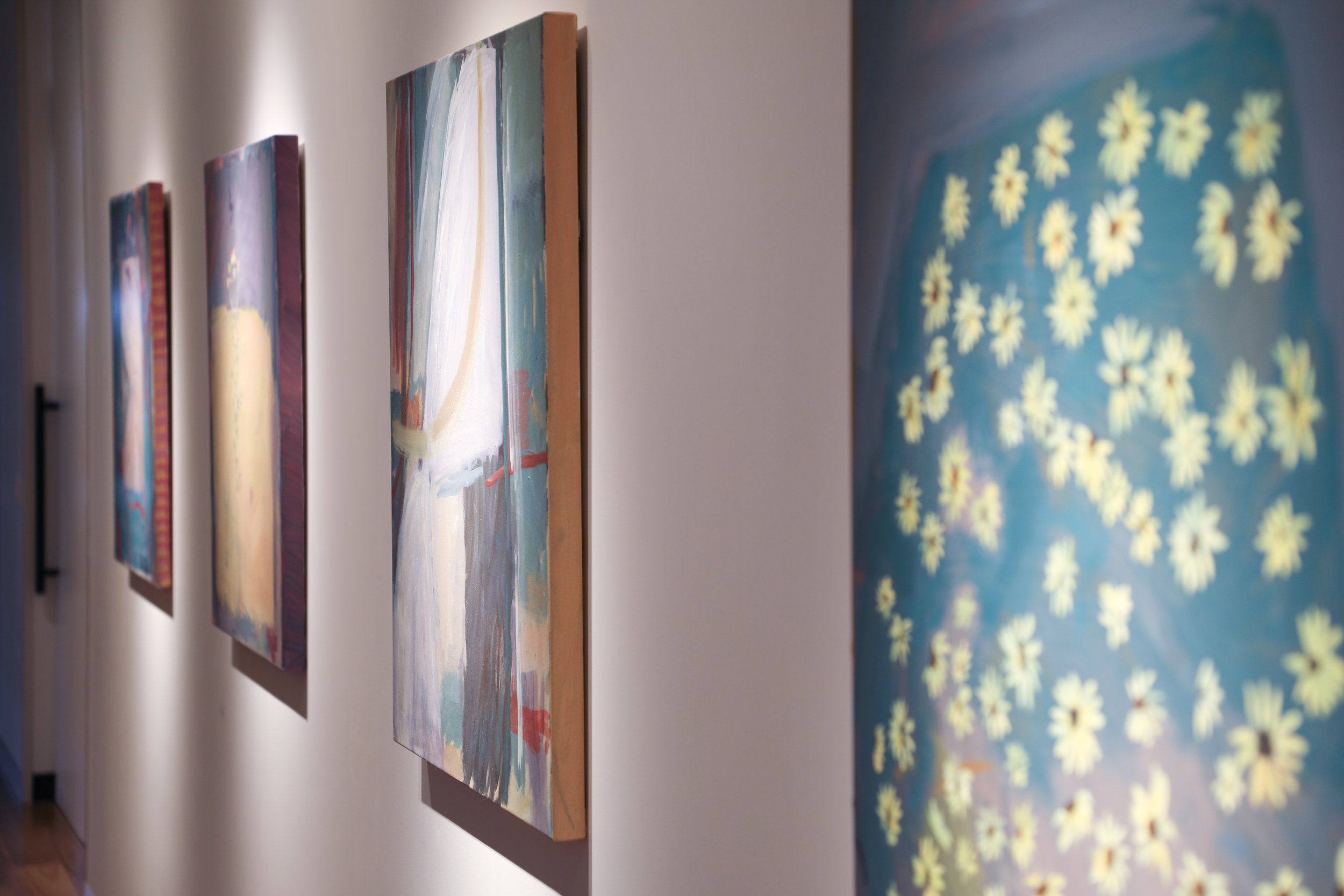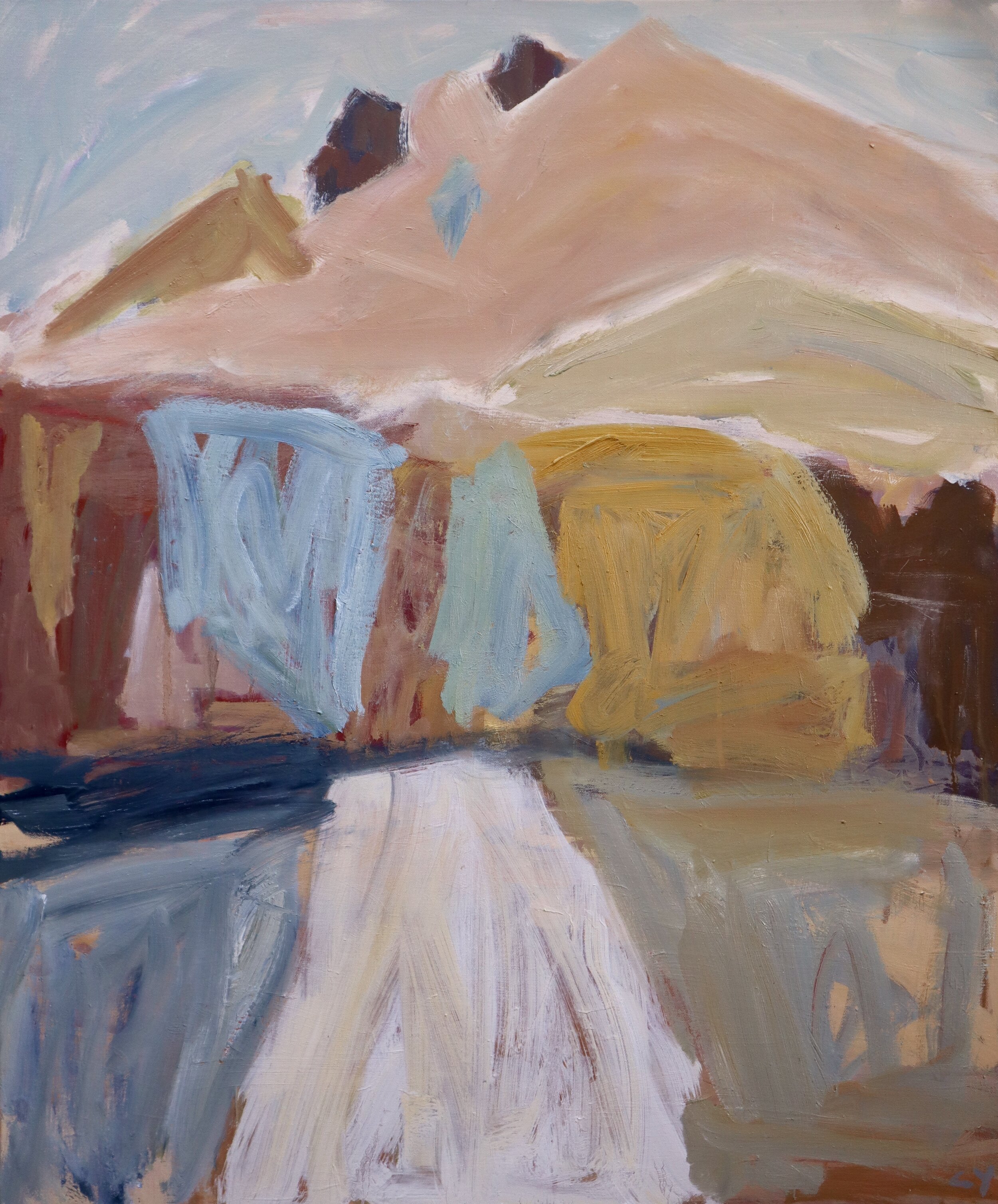A bit about you…
I’m a painter, aspiring farmer and mum of two young kids. I live in Savernake, NSW on Bpangerang country.
In what ways do you express yourself creatively?
I try to understand the world around me and its beauty through paint. I used to paint a lot when I was younger but gave it up for most of my early twenties. It wasn’t until I had my daughter that I started painting again. We had just moved to my partner’s hometown to be involved in his family’s farm. The landscape and community were quite different to what I was used to. And so, painting became something about connecting with my new surroundings and reclaiming a part of myself. It was also a way to deal with the weird creative energy that came with bringing a child into the world.
Bibbaringa
What other outlets influence and inspire you?
I’m really passionate about regenerative farming and its potential for social and environmental change. My husband Ian and I run a small-scale flour mill, value adding organic grain grown on the family farm. We see it as our small way of contributing to a healthy, resilient community and supporting farming practices that build carbon rich soils and biodiversity. I’m inspired by soil, plants and food, and the role these play in culture[s].
Can you describe your connection to place?
James Rebanks in his book ‘The Shepherd’s Life’ writes about his sheep who are ‘hefted’ to the upland pasture in the UK’s Lake District. His native Herdwick sheep aren’t held by fences- their sense of belonging to the fell or mountain is ingrained in them by their mothers during their first summer. I think that century old maternal connection is really beautiful, but also kind of fraught in the Australian landscape.
We live in an old farm house where we’re very much exposed to the elements. It’s brutal most of the time, but it can sometimes feel grounding. It’s taken me a while to feel ‘connected to place’ here. I’m slowly learning the names of local plants and birds, and the stories about the old farming families and the Indigenous communities displaced before them. I notice what time of year the mountain ducks fly in, when the brown snakes are on the move, or when the gold dust wattle lights up. And I sometimes get glimpses of the landscape through my kids’ eyes. I’m learning as they are learning.
Savernake Bush
What is ‘presence’ to you?
Presence is when my daughter reminds me to look up at the stars when we’re locking the chooks up at night.
Presence in place. Place in presence. Your thoughts?
I’ve been working on a body of still lifes which I hope to put in a show next year. In a way, they’re my attempt at understanding presence in place. I’ve been painting flowers that are native to my region and some that aren’t, trying to capture them before they rot in the vase. Beyond ideas of what is and isn’t native or natural, I’ve been thinking about time and how strange it becomes when you’re raising children. I’ve been thinking about still lifes as ‘nature morte’ or dead nature, and how loaded that concept is. And how in the past the still life has often been downgraded to the domestic realm of women artists.
Something else you wish to share...
I recently read Olivia Laing’s collection of essays called ‘Funny Weather- Art in an Emergency’. It helped me process how I’m feeling about what’s going on in the world right now and why I should paint. I liked her profile on artist David Wojnarowicz where she writes, “If silence equals death, he taught us, then art equals language equals life.”












